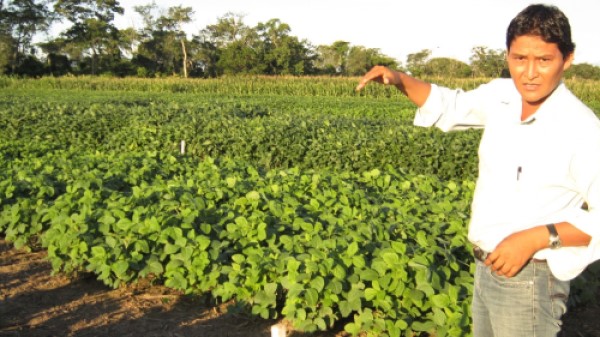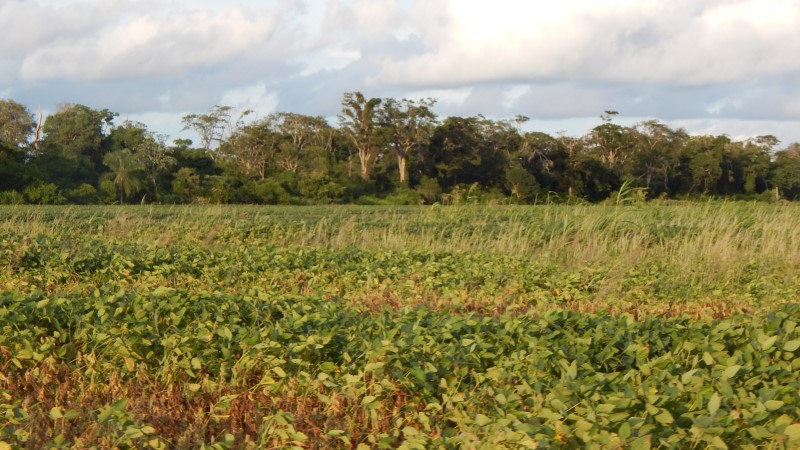
1. Field-level work only won’t lead to forest conservation
Solidaridad has been working more than 10 years now on building responsible supply chains. After working with all kinds of producers, one of the main lessons learned for boosting the adoption of good agricultural practices and complying with different forestry regulations is that sustainability work on the farms needs to be complemented by similar efforts at all levels: jurisdiction, country, market, etc.
Lack of compliance can be explained by several factors that come from a combination of poor enforcement capacity, overlapping criteria on land use mapping, insufficient access to services needed to comply with the law, and lack of market incentives to bring about a change to “business as usual”, to name just a few.
For example, we worked for many years with local producing associations like ANAPO in Bolivia in order to improve their practices on the farms. To overcome challenges that impact the farms but cannot be solved on the individual plots, farmers have joined a public-private roundtable for dialogue that we have facilitated since 2017. We are working on land-use legislation so it can become quicker and easier to comply with for producers.
Other goals set by this national roundtable are to improve public sector accountability by making it more efficient, proactive and transparent using data that adds credibility to the operation of land-use monitoring agencies. Another of our goals is to create specific environmental legislation for the agricultural sector, as the current one was adapted from the industrial sector.
2. Policy advocacy not only about opening new roads but also improving existing avenues
More often than not, when we address soy as a driver for deforestation we think, “The Law does not work, let’s advocate for a new one”. But is that always the best approach?
Many of the existing forestry laws in South America are indeed quite good in their formulation, and very comprehensive. Nevertheless, as seen in the Bolivian example, 70% of land use is illegal even though there is an existing legal framework for land use planning that is logical.
Continuing with the road metaphor, the main issue is the national law acts as a highway that splits itself into different provincial and municipal secondary roads across areas as big as Europe in its implementation. Those roads have very different levels of maintenance and surveillance and the implementation vehicle usually faces gravel, landslides and huge traffic jams along the way.
Part of the advocacy work is to help pave these side roads to implement existing legislation at the various jurisdictional levels more effectively by building a suitable cultural environment for change, improve the institutional capacity of implementation bodies and connect them.
In some countries, land use in a single area or landscape differs from one jurisdictional border to the other, so that on one side it is permitted to grow soy while on the other it is not. We need to detangle the different government agencies involved in law enforcement so compliance becomes more effective, especially in terms of the timely detection of land-use changes.

3. A one-size-fits-all solution doesn't work when talking about deforestation control
Local differences deserve serious attention. Our advocacy work needs to provide an understanding of the limitations and challenges of each country and each jurisdiction faces.
This also applies to the concept of consensus and social licensing. The consensus is a social construction; moreover, it is a communication process. We need to listen and understand the different needs, interests and points of view at stake among the stakeholders present in each territory to find a sustainable solution that is welcomed by the people who will ultimately use it.
The consensus process, however, can also be adjusted for implementing changes. When taking this into account, approaches like the national-level platforms with broad societal participation could work. At the same time, we need to consider smaller, more operational groups that provide both consensus and speed.
4. Improving the implementation of regulations demands introducing technology
In order to scale the capacity of land-use change control and reduce its costs, technology is key. Taking into account the immensity of the main soy producing areas in South America, we cannot hope to count on an army of sheriffs to physically monitor and control land-use changes over thousands of square kilometres.
The qualitative advances made when technology is introduced are quite astonishing, but it should also be noted that importing tools from other countries is not always the best solution if they cannot be easily adjusted to the local reality.
In Bolivia, we facilitated cooperation between the University of Maryland and the Agency for the Management of Forests and Lands (ABT). By introducing an algorithm into the existing satellite mapping system, an automated early warning system was created. This reduced the rate of human error drastically. The interval between the occurrence of a land-use episode and detection has now been reduced from 20 to 7 days.
Another milestone Solidaridad wants to achieve in Bolivia is to transform land planning from a legal requirement to get a clearing permit into a tool that producers find useful to organize land use on their farms according to the law. For this to happen, we are developing a digital platform that can be accessed through any smartphone to manage planning procedures remotely and follow up progress in a timely way.
What can we do to help as businesses and consumers?
- Stay informed about the existing initiatives and formulate supply demands constructively based on what is already available.
- Set strategic partnerships not just at the supply chain level but also at the regional level as well, with the support of provincial and municipal organizations. Instead of designing individual supply strategies to manage risks, partner with other organizations present in the same area and support national or territorial solutions for forestry law compliance.
- Promote funding not just for traceability purposes, but also for technology transfer. This will greatly decrease risks in the supply chain regarding land-use change control.
